Canyons are formed when water erodes rock. Often a river will cut through rock forming a wide, deep canyon - like the Grand Canyon or Glen Canyon. Sometimes, though, it is rain that creates a canyon... like slot canyons in the desert of the southwestern US.
A cloudburst on the hard, dry desert plateaus doesn't soak into the ground, it runs off finding a gully or wash and then rushes downstream creating a wall of water. This is a flash flood. When the gully narrows, the turbulent wall of water pushes through a small crack in the rock quickly eroding it and then swirls through forming a narrow canyon. The next flash flood erodes more and the one after that even more until the floor of the canyon reaches much harder rock. Interestingly, the opening at the top of the slot canyon might be only a foot or two wide but the floor could be five or six feet (or more) wide.
Antelope Canyon (#18) on the Navajo Reservation is perhaps the most well-known slot canyon in the United States. Because it is on tribal land, you must have a Navajo guide to tour it. Fortunately, there are about a dozen tour companies willing to accommodate tourists so finding one wasn't difficult. After loading 16-18 people on each of five trucks, our tour group drove about 10 miles from downtown Page to the entrance of Upper Antelope Canyon where our driver/tour guide walked us through the canyon.
The dark vertical streaks on the canyon walls are called "Navajo Tapestry" (also called "desert varnish" off the reservation!) and are formed when iron oxide and other minerals collect on the rock.
The day we were at Antelope Canyon, there were about 200 - 250 people sharing the adventure with us. One guide said the most people he had ever seen in the canyon at one time was about 1200! It was a bit noisy at times and difficult to get photos with so many people walking around.
Every person was awed by the uniqueness of this canyon.
Even with a crowd, the beauty of the canyon is breath-taking. The colors change dramatically as the light shifts.
This shot was taken looking up. The walls of the canyon are 120 - 150 feet high. I felt quite dwarfed looking up!
Once we reached the end, which goes back outside, we turned around and walked back through the canyon. I was both amused and annoyed that the same "rule" for moving walkways everywhere applied to this natural wonder: stand on the right, walk on the left (of your half of the walk space)!
You can see the narrow confines of the canyon - it is definitely NOT for the claustrophobic! The floor is relatively level and flat but the walls twist and turn.
Without a doubt, Antelope Canyon is beautiful - but it is a little crowded for my taste. I was glad I had booked a tour for a different slot canyon (not on my list) with another tour company as my back-up in case it rained on the day of our Antelope Canyon tour. The experience was totally different! Our tour group was small - five people plus our guide, Matt. We traveled about 20 miles in a fully loaded Hummer to our destination: Secret Canyon.
The entrance looks like an open hallway. We walked about a quarter of a mile through this terrain.
As we walked, Matt described how slot canyons are formed and explained that in "canyon age," slot canyons are young. They form relatively quickly because of the kind of sandstone - Navajo sandstone, which is essentially petrified sand dunes.
The layers of sandstone are easily seen.
As flash floods rush through the canyon, they deposit debris picked up miles away as well as pick up additional debris in the canyon. Matt showed us a video (don't you just love smart phones?!) he took from high ground several weeks before our visit of a powerful flash flood that moved huge boulders!
This debris was deposited during that flash flood.
As we walked through the canyon, we could hear the quiet. Although it was a warm day, it was quite comfortable inside the canyon. It is a place to experience with all your senses.
~ solitude ~
The texture of the canyon walls was intersting. Some places were smooth as glass; others were grainy.
This wall reminded me of light and dark brown sugar. The opposite wall was quite smooth.
The rushing water sculpted the canyon walls with smooth brush swipes.
Colors of amethyst, rose, peach and ochre fade one into the other creating a masterpiece.
Matt gathered us into a small "room" to show us a sandfall. He placed a small handfull of sand on a ledge and gave it a gentle nudge over the side. Beautiful to watch!
At times, even though I was standing perfectly still and there was not a drop of water in sight, I could feel the speed and turbulence of the whooshing water racing through the canyon much the same way that the pouncing cat-like curves on old race cars exuded speed just standing still.
The rounded bowl areas are formed by whirlpools during violent flash floods.
This slot canyon was narrower than Antelope Canyon. Some places we had to slide by sideways. The floor, while mostly level, was not as flat as Antelope Canyon. In fact, there were a few places we had to climb over some rocks. Matt said Secret Canyon was not as old as Antelope Canyon and the bottom (that hard layer of rock) wasn't yet established.
Richard sometimes thinks he's the pack mule ;-)
This formation, called "clock gears," is exquisite and quite narrow.
Each twist and turn revealed something new to look at. All of a sudden, we turned a corner and the air felt warmer and the "back door" was open.
Secret Canyon's back door - which is really a misnomer since the rushing water enters here.
We walked back through the canyon the same way we came. The angles, colors, lighting and shadows are entirely different looking "backwards" so it was like a brand new canyon.
Matt wanted to be sure we had a real "Hummer adventure" on the way back so we climbed rocks and at times I'd swear we were on two wheels. It was a fun adventure we'd never be able to do in a car.
There is something wrong about looking out the windshield and seeing clouds high up in the sky!
The third canyon we explored was Glen Canyon. We hiked to Horseshoe Bend Overlook (#53) to get an aerial view of the canyon.
The sandy path on the right is the trail - six inches of very fine, very soft sand. It's like trying to walk through quicksand - or at least what I imagine walking through quicksand is like!
As I was dragging myself up the hill, I consoled myself with the thought that once I reached the top, I would be able to see the canyon. However...
... once we reached the top of the hill, the sandy path continued for another third of a mile, now downhill - which, of course, would be uphill on the return trip.
The downhill trek was a little easier as the path zig-zagged down to the edge of the canyon. The closer we got to the edge, the more Navajo sandstone we saw and eventually the fine sand gave way to the sandstone. As we approached the edge, we could see people at the overlook.
Surely there must be a guardrail or something at the edge!
BUT THERE ISN'T!!
Our guide at Secret Canyon had advised us to lay down and inch to the edge, not stand near the edge. He said people die every year falling off the edge.
So what is the big attraction? The Colorado River winds its way through Glen Canyon and at this point makes a perfect horseshoe shape. The water, having left the dam just a few miles upstream, is still crystal clear.
The craggy canyon walls are beautiful and contrast nicely with the river below.
Although there were several groups of people visiting Horseshoe Bend Overlook while we were there, it didn't seem crowded. In fact, it's easy to get lost in the immenseness of it all. The river was 1000 feet below us. We could see for miles and miles to the horizon. It was impossible not to see the hand of God at work.
It's the kind of place where you can get lost in your thoughts.
In the photo above with Richard standing on a rock, it's easy to see the diagonal striped layers which are remnants of the layers the ancient sand dunes had before they petrified into stone. Calcite (or limestone) mixed in with rain and snow to cement the grains of sand together. It took a long time but finally all the sand dunes were petrified retaining their beautiful sloping dune shapes - what we call Navajo Sandstone.
Now, as the grains of sand erode, chunks of calcite remain. Some of these calcite chunks are covered with hard sandy bumps which are concretions of iron. As the grains of sand erode, the iron concretions are visible.
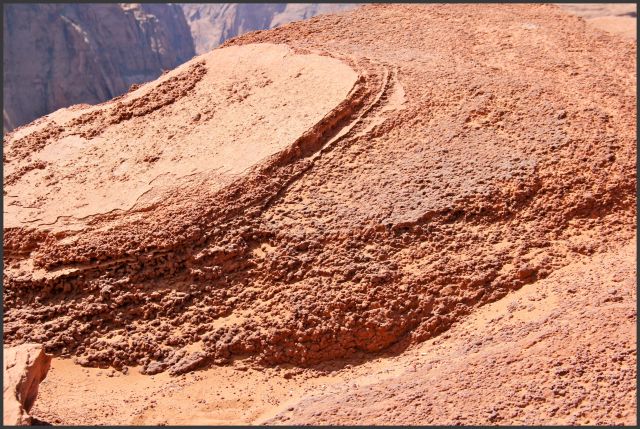
I noticed a lot of people speaking French, German and even Italian. Those I didn't overhear, I initiated a conversation with. In my informal survey, out of 75 people, only 4 were native English speakers! Perhaps we were there on International Visitor Day. Or perhaps Americans haven't discovered this gem yet - or don't want to make the trek. Whatever the reason, we enjoyed talking with several groups of visitors as we shared our state with them. A common query was why Arizona doesn't observe daylight savings time!
Now, as the grains of sand erode, chunks of calcite remain. Some of these calcite chunks are covered with hard sandy bumps which are concretions of iron. As the grains of sand erode, the iron concretions are visible.

When the little concretion balls break loose, they are known as "Moki Marbles."
I noticed a lot of people speaking French, German and even Italian. Those I didn't overhear, I initiated a conversation with. In my informal survey, out of 75 people, only 4 were native English speakers! Perhaps we were there on International Visitor Day. Or perhaps Americans haven't discovered this gem yet - or don't want to make the trek. Whatever the reason, we enjoyed talking with several groups of visitors as we shared our state with them. A common query was why Arizona doesn't observe daylight savings time!
After taking a photo for one couple, we asked them to take ours - international relationship building!
It was a warm afternoon and the hike back seemed like it was ten times longer - probably because more of it was uphill. Just when I thought I couldn't go another step, a light rain began to fall cooling everything (including me!) down. God gives us exactly what we need, just when we need it. The remainder of the hike seemed to go faster and soon we were back at our car. As I downed yet another bottle of water, I marveled at the uniqueness of each of the canyons - like fingerprints, no two exactly alike.
Thumb Up or Down: UUUUUUPPPPP!!!! Loved all three - but if I had to choose between Antelope Canyon and Secret Canyon, I would take Secret Canyon.
Miles Round Trip: see next post
Miles To Date: see next post
Percent of List Completed: 82%
Date of This Trip: August 30 - September 3, 2012
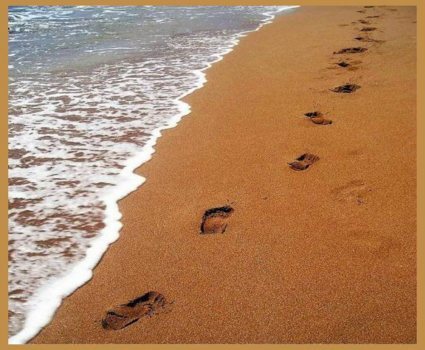
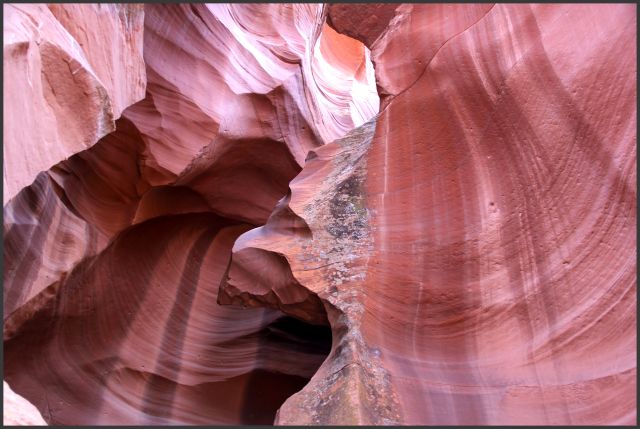

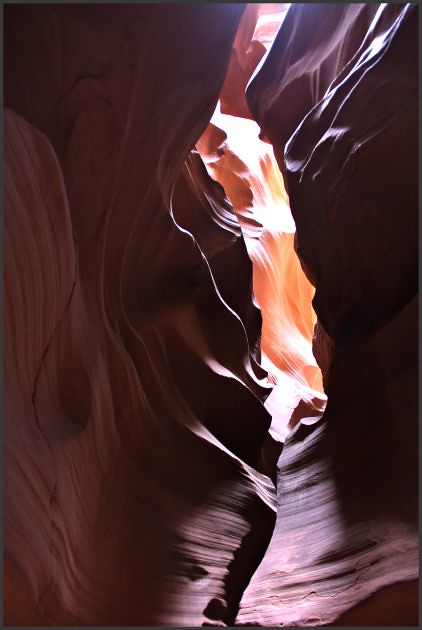
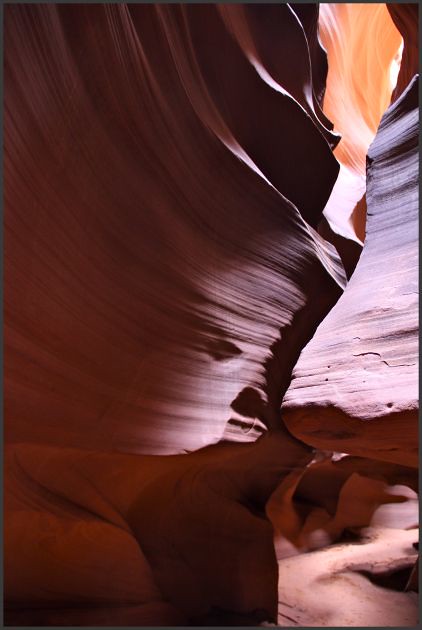


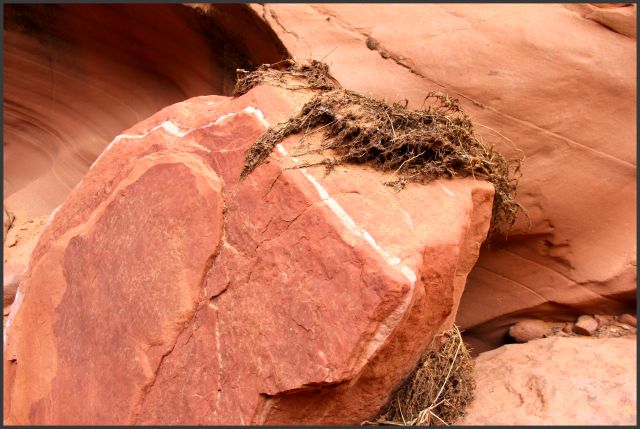
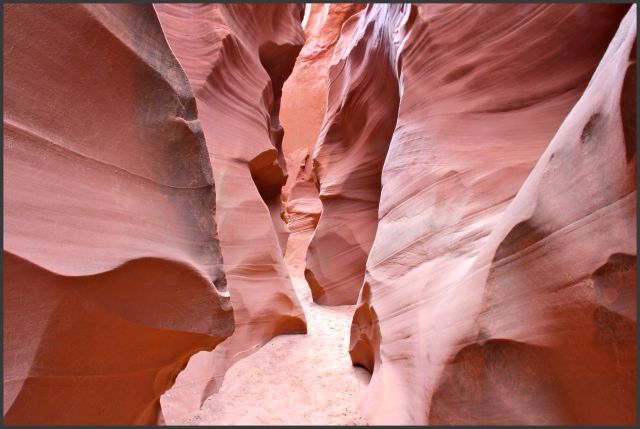
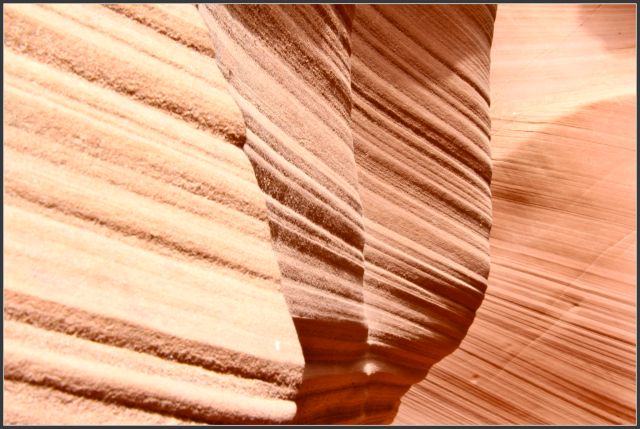
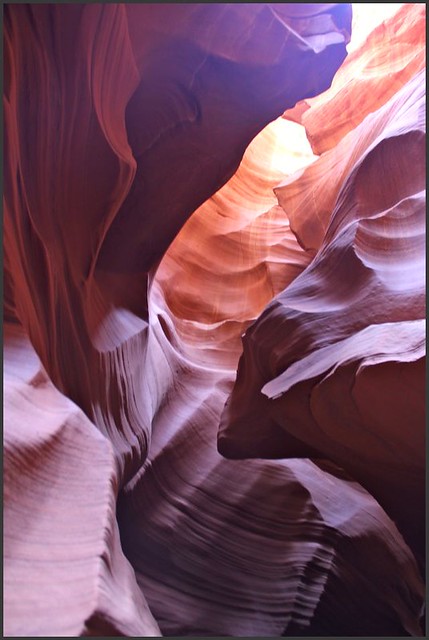
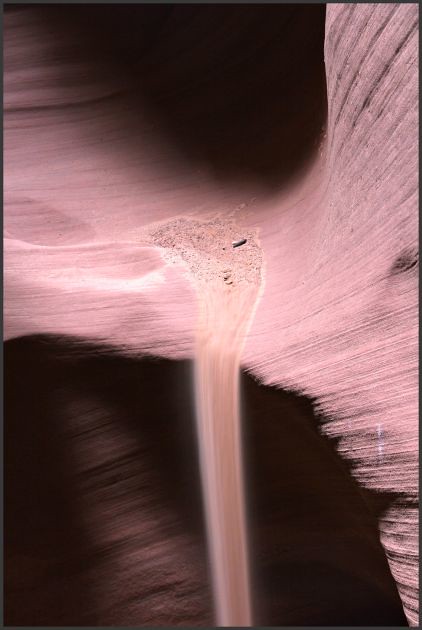
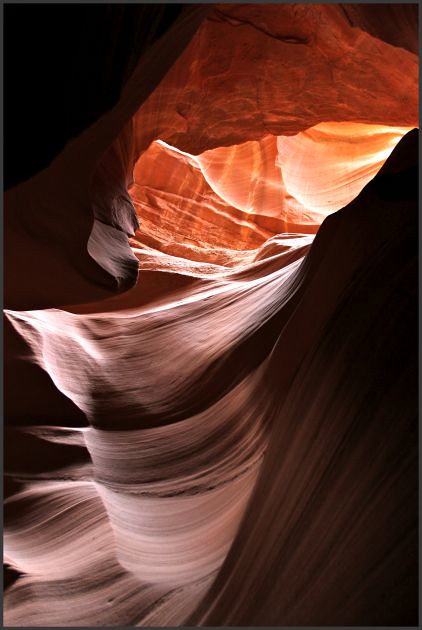


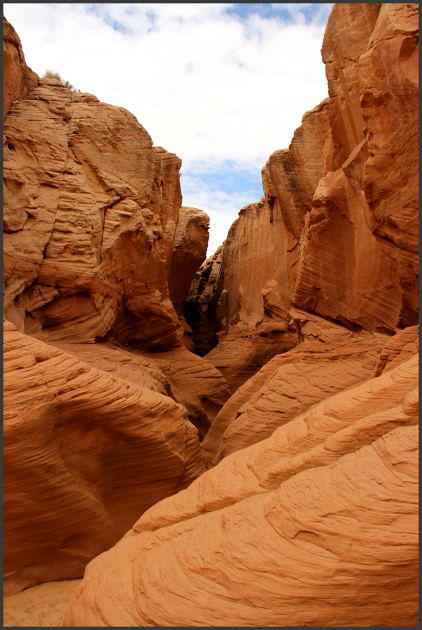
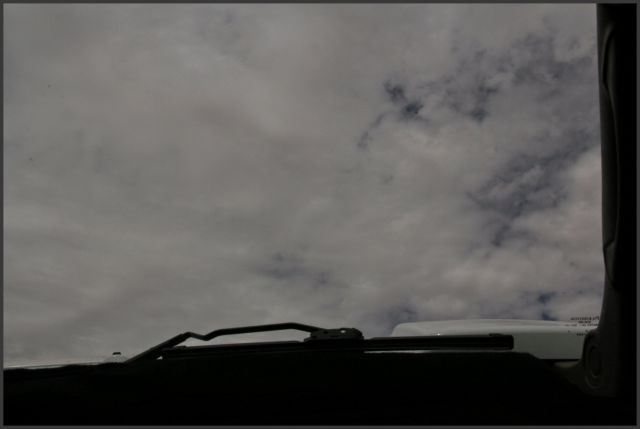
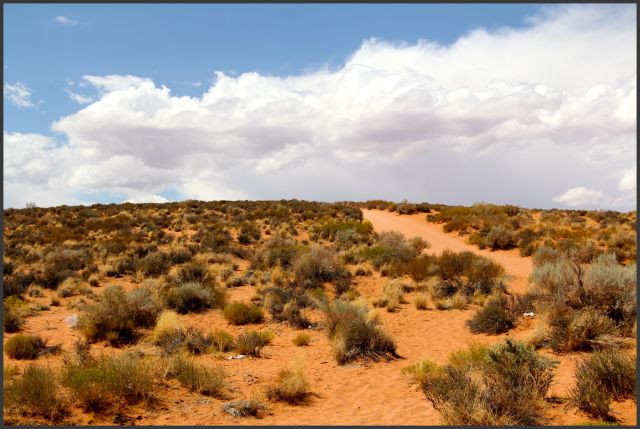
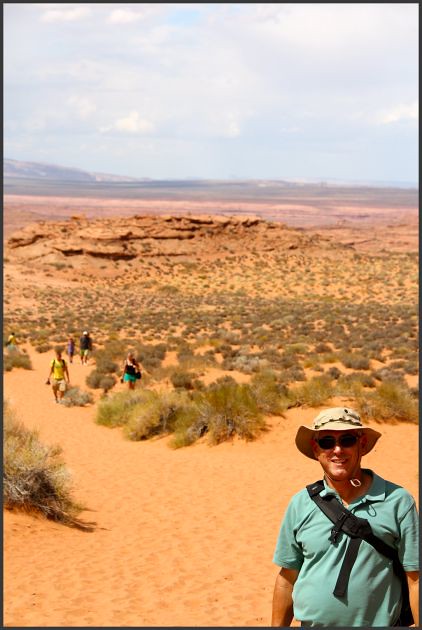

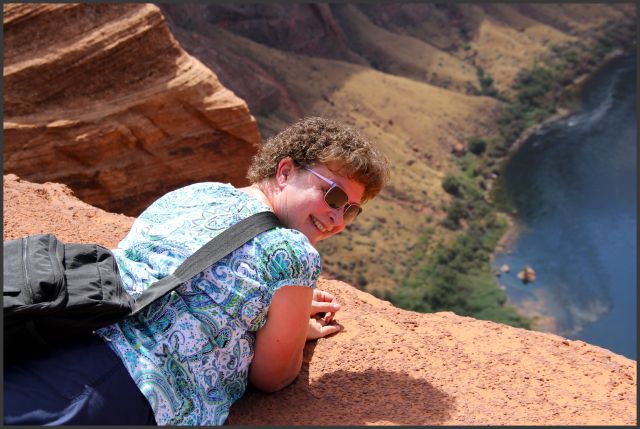

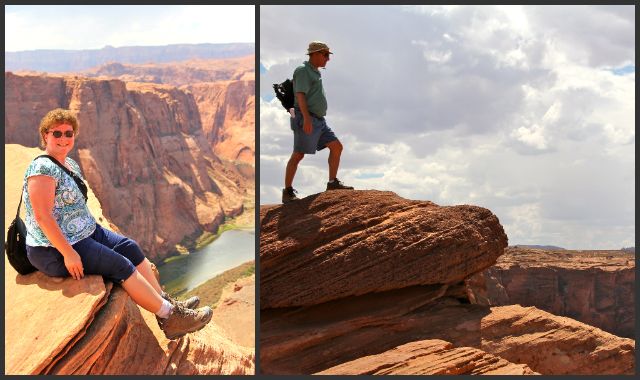
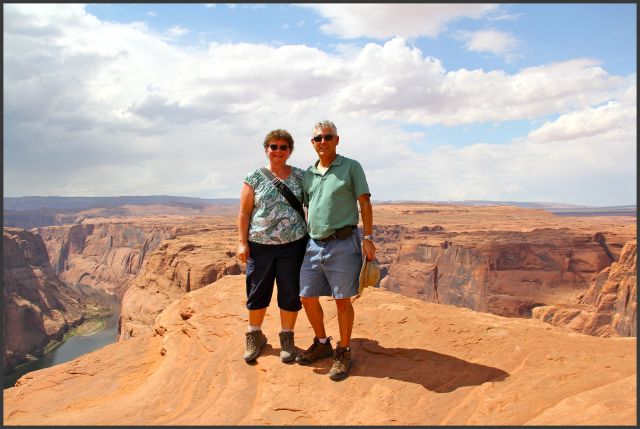
Yet another beautiful and informative blog. Secret canyon looked amazing. Such a small tour group was a plus. Thanks for sharing your adventures.
ReplyDelete